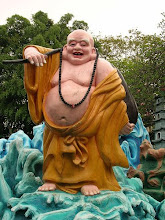
Silent mind means to keep quiet temporarily. It is simply a suppression of the objects in mind. It can happen many times, but it will not last. Still mind is also temporary. Mediatation or concentration can result in still mind. It is like the flame of the candle. When there is no breeze, the flame will be still. When a wind comes, the candle will flicker and go out. Still mind will be blown away as soon as it encounters the wind of a new thought.
As for no-mind, I am hearing this question for the first time. No person from India or the West has ever asked me about this before. I am very happy to deal with this question for the first time.
Before we speak about no-mind, we have to see what mind is. Let us start from conciousness. Sometimes you want to look in a mirror to see what you look like. In the same way, conciousness sometimes wants to look at itself to see what it is. A wave will arise in conciousness. It will ask itself, "Who am I"? This wave that arises in conciousness imagines itself to separate from the ocean. This wave becomes "I", the individual self. Once it has become separate, this "I" degenerates further and start to create. First there will be space, the vast, frontierless emptiness of infinite space. And along with space, time will be created, because wherever there is space, there must be time. This time becomes past, present and future, and from these three attachments arise. All creation rises within the past, the present and the future. This is called samsara. Samsara is endless past, present and future. Anything which is born in time, which stays in time, will be finished in time. And all this is mind. The "I" arose and created space, then time, then samsara. This "I" has now become mind, and this mind is "I".
Then at some point, an intense desire for freedom will arise. This desire will arise from conciousness itself. Originally there was a descent from conciousness- from the "I" to space to time to samsara. Now there will be an ascent. As you ascend, attachment to physical object will go, then vital, then mental, then intellectual. Finally , you return to "I" alone. This "I" is still mind.
This "I" has rejected everything. It exists alone with no attachemnts. It cannot go back to the world of attachments, to samsara. It has a desire for freedom; it wants to return to its original place. This "I" which rose from conciousness is now returning to conciousness. It takes the decision, "Become no-mind now" and with that decision the "I" is gone, mind is gone. The "I", which is the mind, has been rejected, but there is still something there which is between the "I" and conciousness. This in-between thing is called no-mind. This in-between entity will merge into conciousness, and then it will become conciousness itself.
Look at this cup (pointing at a tumbler on the table). There is space, emptiness, both inside and outside this cup. The space inside we call "inside space" and the space outside is called "Outside space". Why ? Because name and the form of the cup divides the inside from the outside. When the name and form are removed, the space inside and the mahat, the greater space, becomes one. In fact they were always one. From the point of view of space itself, there never was an outside or inside. Name and form made it appear that there was an inside and outside, but the space was never affected by the artificial divisions. Likewise, freedom is always there, always unaffected by names and forms. Name-and-form is "I". When the "I" goes, the walls which appear to divide conciousness are removed. This becomes This.
When you go from mind back to conciousness, you go through this stage of no-mind. In that state there will be the feeling, the recollection, "Now I have no-mind". Gradually, slowly, this no-mind will merge back into the beyond. But how it happens, I do not know.


























No comments:
Post a Comment